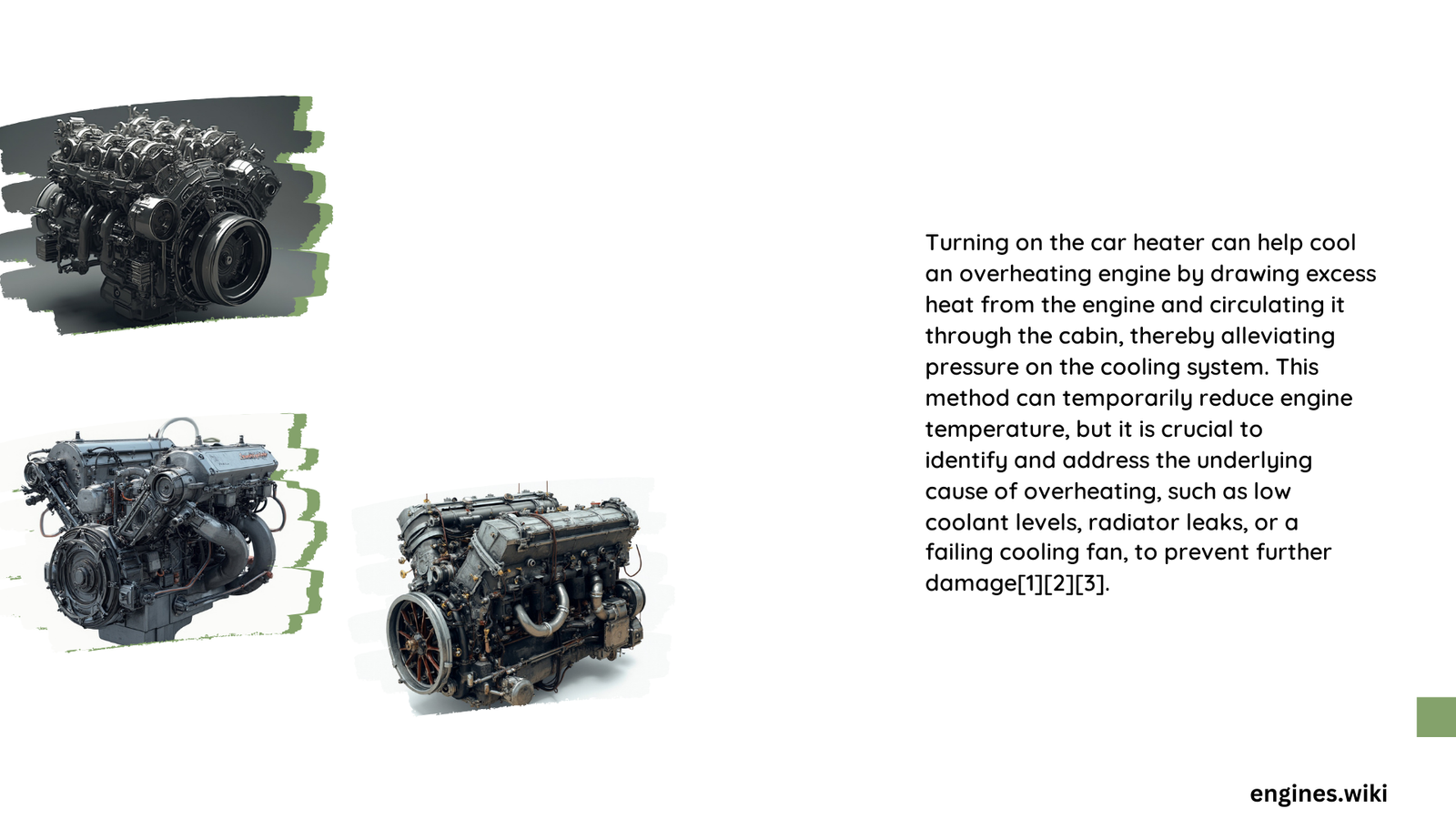Turning on the cabin heat can indeed help cool an overheating engine. This counterintuitive method works by utilizing the vehicle’s heater core to dissipate excess heat from the engine. When activated, the heater core draws hot coolant from the engine and circulates it through the cabin, effectively transferring heat away from the engine. While this technique can provide temporary relief, it’s important to understand its limitations and the underlying causes of engine overheating.
How Does Cabin Heat Affect Engine Temperature?
The relationship between cabin heat and engine temperature is rooted in the vehicle’s cooling system design. Here’s how it works:
- Hot coolant circulation: When you turn on the cabin heat, hot coolant from the engine is directed through the heater core.
- Heat transfer: The heater core acts as a small radiator, transferring heat from the coolant to the cabin air.
- Engine cooling: As the coolant loses heat in the heater core, it returns to the engine at a lower temperature, helping to cool the engine.
This process can help reduce engine temperature, especially in situations where the primary cooling system is struggling to keep up.
What Are the Temperature Thresholds for Activating Cabin Heat?

Understanding when to activate the cabin heat to cool your engine is crucial. While exact thresholds can vary by vehicle, here are some general guidelines:
- Normal operating temperature: 195°F to 220°F (90°C to 104°C)
- Warning zone: 230°F to 240°F (110°C to 116°C)
- Critical overheating: Above 240°F (116°C)
When your temperature gauge enters the warning zone, it’s time to consider turning on the cabin heat. This can help prevent the engine from reaching critical overheating levels.
How Does Cabin Heat Activation Affect Coolant Flow?
Activating the cabin heat influences coolant flow in several ways:
- Increased circulation: The heater core becomes an additional path for coolant flow.
- Heat dissipation: More coolant is exposed to air, increasing overall heat dissipation.
- Pressure relief: By providing an alternate path, it can help relieve pressure in the cooling system.
However, it’s important to note that this doesn’t significantly increase the overall coolant flow rate. Instead, it provides an additional avenue for heat dissipation.
What Are the Challenges of Using Cabin Heat to Cool an Engine?
While turning on the heat can help cool an engine, this method comes with several challenges:
- Passenger discomfort: Blasting hot air into the cabin can be extremely uncomfortable, especially in warm weather.
- Limited effectiveness: The heater core has a finite capacity to dissipate heat, which may not be sufficient for severe overheating.
- Temporary solution: This method doesn’t address the root cause of overheating and should only be used as a short-term measure.
- Potential for further damage: Continuing to drive an overheating engine, even with the heat on, can lead to serious engine damage.
When Should You Not Rely on Cabin Heat for Engine Cooling?
There are situations where using cabin heat is not advisable or effective:
- Severe overheating: If your temperature gauge is in the red zone or you see steam, pull over immediately.
- Coolant loss: If you’ve lost a significant amount of coolant, the heater core may not function properly.
- Mechanical failures: Issues like a broken water pump or thermostat can’t be solved by turning on the heat.
In these cases, it’s best to stop driving and seek professional help.
What Are Alternative Methods to Cool an Overheating Engine?
While turning on the heat can help, there are other steps you can take to cool an overheating engine:
- Pull over and turn off the engine
- Open the hood to release heat (if safe to do so)
- Check coolant levels (once the engine has cooled)
- Look for visible leaks or damage
- Use an emergency coolant or water if necessary
Remember, these are temporary measures. A persistently overheating engine requires professional diagnosis and repair.
How Can You Prevent Engine Overheating?
Prevention is always better than cure. Here are some tips to keep your engine running cool:
- Regular maintenance checks
- Keeping coolant levels topped up
- Inspecting belts and hoses for wear
- Ensuring the radiator is clean and unobstructed
- Addressing any warning signs promptly
By staying proactive, you can avoid the need to use cabin heat as an emergency cooling measure.
In conclusion, while turning on the heat can indeed help cool an overheating engine, it should be viewed as a temporary emergency measure rather than a long-term solution. Understanding your vehicle’s cooling system and maintaining it properly is the best way to prevent overheating issues.
References:
1. How to Prevent Car Overheating and What to Do in an Emergency
2. How the Summer Can Cause Your Car to Overheat
3. Car Overheating? Did You Know Turning on Your Heater Will Help?
